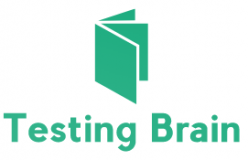What is Informatica
Informatica is a tool used for extracting, transforming and for loading process. It is a easy to use tool where it has got simple visual interface like visual basics.
Advantages , Disadvantages, Components, PDF Tutorials
Here one has to just drag and drop the object to draw a flow process for transforming and extracting the data. This process flow is called mapping and once done it can be run as and when needed. It helps to move large data in an effective way many times better than any other data movement. Informatica has got the the ability to convert raw collection of data to one useful data that can be applicable to all.
Informatica is a broadly used ETL(Extraction, Transformation and Loading) tool for extracting the source data and loading it into the target after applying the needed transformation. It is important to note that The Informatica PowerCenter tool for ETL is also regarded as Informatica. Informatica Powercenter does majorly the job of Data integration. It can connect & gather data from distinct heterogeneous source and process the data.
The most recent version of Informatica PowerCenter is 9.6.0. The following are the different editions for the PowerCenter:
- Standard edition
- Premium edition
- Advanced edition
The parts within Informatica help in extracting data from its source, changing it as it concerns business needs and loading it into a target data warehouse.
Informatica makes use of service driven architecture that has the ability to share services and resources among several machines.
Samsung, Allianz, Fannie Mae, ING, and U.S Air Force are some of the major clients who use Informatica Powercenter as a tool for data integration. The popular tools available in the industry that rival Informatica are Microsoft SSIS, Ab Initio, Oracle OWB and IBM Datastage.
Informatica was created by Informatica Corp. The main components of Informatica are its server, repository server, client tools and repository. The Informatica repository server and server make up the ETL layer, which finishes the ETL processing.
The PowerCenter server completes projects based on flow of work developed by work flow managers. One can monitor the work flows with the use of a work flow monitor. With the aid of mapping designer, tasks can be structured to create mapping between source and target. Mapping is defined as a pictorial representation of data flow to target from source. Transformations such as filtering, aggregation, and joining are the main examples of transformation.
Informatica presents you with a rich set of features such as operations at row level on data, integration of data from semi-structured, multiple structured, or unstructured systems, data operation scheduling. It also possesses the metadata feature; hence the information about data operations and the process are preserved as well.
- Power Exchange
- Power centre
- Power centre connect
- Power Channel
- Metadata exchange
- Power Analyzer
- Super Glue
- Communicates with all major data sources
- Handles large data effectively
- Reuse-ability of the product
- Resources are available in the market all throughout
- Can be run on Windows or Unix environment.
- If one users are not aware of handling large data at a time, then it will be time consuming and will lose most of the data that is needed by other members of the group
- If the software is not able to use in windows or unix format, then it will be difficult to store a large number of data that are accurate and useful. The users have to make sure that their systems have supports the file. Otherwise it will be a great loss.
PDF Tutorials
- Informatica PowerCenter 9.6.1 – Beginners Tutorial in PDF
- Informatica powercenter 9.5.1 – getting started guide
Check Informatica Interview Questions also.
